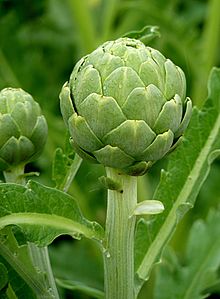
Chapter 13 assembled 20jy02
For many generations it has been known that vegetables are a valuable food, but it is only in recent years that scientists have discovered why. In cookery books of a hundred or more years ago people were advised to eat vegetables 'to purify the blood'. Now we are advised to eat them for our figure's and complexion's sake and for vitality and general good health.
It is the presence of minerals and vitamins in vegetables that makes them such valuable foods.
Green, leafy vegetables give us Vitamins A, B, and C, while watercress is a good source of calcium and iron.
Iron is also found in parsley, mustard and cress, spinach, turnip-tops, peas, beans, and lentils. Carrots are valuable for their Vitamin A, and peas, beans, and lentils for Vitamin B' and protein.
Unfortunately, when vegetables are badly cooked a lot of their value is lost. They are drowned in water, over-cooked, and the goodness poured down the sink.
Quite apart from the loss in food value, this is a foolish method, for it destroys the natural flavour and makes the vegetables unpalatable.
Canned vegetables lose some of their vitamins and minerals to the liquid, and some vitamins are destroyed by the high temperatures used in canning. Still more of the Vitamin C is lost when the vegetables are heated before serving, especially when the can is punctured prior to heating.
If deep-frozen vegetables are cooked carefully ac-
VEGETABLES, HERBS, AND SALADS 187
cording to the manufacturer's directions their nutritive value compares very favourably with that of the fresh.
For maximum flavour and food value take the vegetables straight from the garden to the kitchen. The next best thing is to take care to buy only fresh vegetables and to use them as soon as possible. Good-quality vegetables are crisp and firm, but not hard. Those of a medium size are the best, as if too small the flavour will not be fully developed; if too large they will be inclined to be coarse and tough. Cabbage, cauliflower, and lettuce should be heavy in proportion to their size, and should feel solid to the touch.
If you have to keep green vegetables for any length of time they can be prevented from wilting by putting them in a covered saucepan or other container and standing it on a cool floor. If you have a refrigerator, wash the vegetables, drain well, and put them in a covered dish in the least cold part of the refrigerator. Care must be taken not to freeze them, or they will be spoiled, but if properly treated, a little while in the refrigerator greatly improves salad vegetables which have become flabby.
If wilted green vegetables are the only ones procurable, they can be revived, if not too far gone, by soaking in cold water for ½ hour and then hanging up in a draught in a wire salad basket or clean cloth. Some of the goodness and flavour will be lost, so avoid soaking too long.
Root vegetables should be kept in a dark, cool, airy place and, if to be stored for any length of time, should be put on ventilated shelves or racks.
188 THE PENGUIN COOKERY BOOK
1. Wash green vegetables thoroughly, separating the leaves of cabbages so as to get them clean without soaking. Cut cauliflower and broccoli into sprigs. Scrub root vegetables and then peel thinly or scrape with a sharp knife. Keep outer leaves of cabbage, and trimmings from other vegetables for the stock-pot, see #32.
2. Slice root vegetables or dice them. Shred green vegetables, except spinach.
3. Heat about an inch [25mm]of water in a saucepan with 1 level tsp. salt to each pound [450g] of vegetables. When the water is boiling add the vegetables and cover with a lid, which should fit well to keep in the steam needed to help cook the vegetables.
4. Boil for 10-20 minutes, giving the pan an occasional shake to prevent sticking. Do not boil too rapidly, or the water will boil away and the pan will burn. Just keep a good steady boil.
5. When the vegetables are tender, but not mushy, drain off any liquid, keeping it for stock.
6. Serve the vegetables at once, as keeping spoils the flavour and destroys Vitamin C.
7. Melt a little margarine, butter, or dripping in the pan and return the vegetables, tossing them for a few minutes to dry out any moisture and mix them well with the fat. They may also be served with Sauce, #70, made with vegetable stock alone, or with some milk added.
All vegetables may be cooked under pressure according to instructions provided with the cooker. The greatest saving is with vegetables which normally require fairly long cooking. Care must be taken not to exceed the time
VEGETABLES, HERBS, AND SALADS 189
recommended, or the vegetables will be overcooked, with loss of Vitamin C and flavour.
Temperature 450 F. Mark 8.
Quantities for 4 helpings:
1-1½ lb. [450-675g] any vegetable
Buttered breadcrumbs #772
½ Pt. Cheese Sauce, #75 (1 c.)
Boil the vegetables as in #384, saving any liquid for the sauce. Put vegetables and sauce in layers in a pie dish, finishing with a layer of sauce. Cover with buttered breadcrumbs. Brown in a hot oven or under the grill.
1. Prepare the vegetables as for #384.
2. Heat sufficient fat (butter, lard, dripping, or oil) to cover the bottom of the pan and, when hot but not smoking, add the vegetables. Add ½ level tsp. salt for each pound [450g] of vegetables. Cover with a tightly fitting lid.
3. Cook over a moderate heat, shaking the pan occasionally. When the vegetables are tender - in about 10-20 minutes - serve with any liquid in the pan. Sprinkle with chopped parsley.
1. Prepare the vegetables as for #384.
2. Put in a casserole with ½ oz. fat to each pound [450g] of vegetables, ½ level tsp. salt, and a pinch of pepper. Add 1-2 Tbs. water and cover with a fitting lid.
3. Cook in a slow-moderate oven, 275-375 F. [135-191°C] Mark 2-5, for ½-1 hour or until tender. Serve sprinkled with chopped parsley.
190 THE PENGUIN COOKERY BOOK
1. Peel the vegetables and cut them in pieces or leave whole. Place in the hot fat round a roast joint or in a little hot fat in a separate pan.
2. Bake in a hot oven, 450 F. [232°C] Mark 8, turning occasionally. They will take 40 minutes to 1 hour, depending on the size. Drain from the fat.
Quantities for 4-5 helpings:
1 oz. [30g] fat (2 Tbs.)
2 lb. [900g] mixed vegetables,
2-4 oz. [55-110g] bacon, chopped sliced or diced (½-¾ c.)
Bouquet garni
1 onion, sliced
3 Tbs. wine vinegar
1 Tbs. flour
Salt and pepper
½-¾ Pt. stock (1-1½ c.)
Chopped parsley
Measures level. The vegetables may be any in season. If mostly root vegetables are used, the larger amount of stock will be needed, otherwise use ½ Pt. only. Melt the fat in a saucepan, and fry the onion and bacon until they are just beginning to brown. Add the flour and cook until it turns yellow. Then add the stock, stir until it boils, and add the vegetables and flavourings. Boil gently, stirring occasionally until the vegetables are tender. Add the vinegar and taste for seasoning. Serve with chopped parsley sprinkled over.
Quantities for 4 helpings:
1 pt. [570ml] diced carrots (1 c.)
1 egg-yolk
¼ pt. [140ml] diced turnips (½ c.)
Chopped parsley
½ pt. [285ml] peas (1 c.)
½ pt. [285ml] Vegetable Sauce, #70 (1 c.)
file 22
VEGETABLES, HERBS, AND SALADS 191
Measures level. Cook the vegetables in a little water as in #384. Add the egg to the sauce and cook for a minute or two. Combine sauce and vegetables and serve with chopped parsley sprinkled over.

Allow 1 small, or half a large one, for each person.
Artichokes must be very fresh. They are no good if they have hard, sharp, brown tips.
Prepare by cutting off the stalk and removing the outer row of tough leaves.
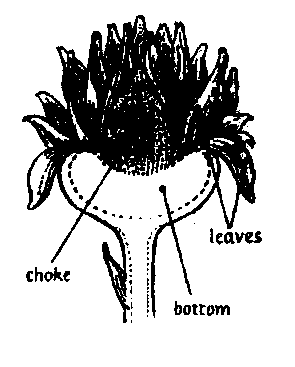
[g
p191]
Trim the tops of the other leaves with scissors to make a neat shape. Wash in several changes of water, or soak in salted water for an hour to remove any insects. Drain well, upside down.
Cook in boiling, salted water for ½-¾ hour for small ones and up to an hour for large ones. They are done when the leaves pull out easily. If over-cooked they become tasteless.
Drain upside down.
To serve, remove the 'choke' that is, the bunch of small fluffy leaves in the centre. The centre may then be filled with Hollandaise Sauce, No.81, or serve the sauce separately. Cold artichokes are generally served with Vinaigrette Sauce, #117.
192 THE PENGUIN COOKERY BOOK
Artichoke bottoms are obtained by pulling off all the leaves. When the whole artichoke is served, the juicy bits at the end of each leaf are dipped in the sauce and eaten.
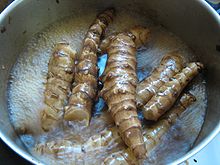
Allow ½ lb. [225g] per person.
Prepare by scrubbing and then scraping or peeling thinly. Put at once in cold water to cover, with 1 Tbs. vinegar to every quart [1140ml] . This helps to keep them a good colour. Leave in the water for ½ hour. They may also be boiled in their jackets and peeled afterwards.
Cook by putting in boiling salted water to cover, and boil until tender when pierced. Over-cooking makes them soggy. Time 20-30 minutes. They may also be roasted as in #389 or fried like Potato Crisps, #472.
To serve, make Sauce, #70, with some of the vegetable water, or serve au gratin, #386, or use for soup, Nos. #38 and 52.
Allow 6 or 8 medium-sized pieces per person.
Prepare and use as soon as possible after cutting. Stale asparagus has very little flavour and is inclined to be bitter. Never buy it with drooping or dry heads. Wash well, scrubbing the white ends and scraping them downwards with a sharp knife. Place in bundles of twelve large or twenty-four small heads with the tops level, and trim the ends. Use these for Vegetable Stock, #32.
Cook in boiling salted water to cover the thick ends, but leave the heads in steam. If possible, use a tall, deep pan, so that they can stand upright. If you cook asparagus often, it is worth while buying a special asparagus boiler. The asparagus takes anything from 15 to 30 minutes to cook, depending on its condition. It should still be crisp at the thick ends. If over-cooked the tips will fall off. Drain carefully.
VEGETABLES, HERBS, AND SALADS 193
To serve, place on a hot dish and serve Brown Butter Sauce, #109, separately. It may be served cold, in salads or with Vinaigrette Sauce, #117, or in Rolled Sandwiches, #784, with grated cheese or Cheese Sauce, #75, or the tips mixed with sauce may be used to fill patties, #719.
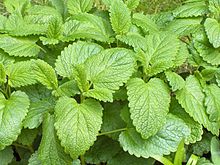
The finely chopped raw leaves are used for flavouring salads, soups, and stews. Allow 2 Tbs. chopped balm to 1 Pt. [570ml] liquid.
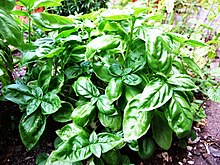
Small amounts of the fresh leaves are used for flavouring soups, salads, stews, and savoury meat dishes. It can be bought and used dried. A little is very good in minced-meat patties or loaves.
A bay leaf forms part of the bouquet garni, used for flavouring savoury dishes, see #13. Bay leaves are fairly strong in flavour, and a piece of a leaf is generally sufficient for flavouring a dish for 4 people. Alternatively a whole leaf may be used and removed when the desired flavour is obtained.
Allow ½-1 lb. [225-450g] per person, depending on the fullness of the pods.
Prepare by shelling. If the pods are young and tender, they can be sliced and cooked with the beans; if old, use them for Vegetable Stock, #32.
Cook in a little boiled salted water as in #384.
To serve, toss in a little melted butter or margarine and sprinkle with chopped parsley or savory; or serve with Sauce, #70, made with some of the cooking
194 THE PENGUIN COOKERY BOOK
liquid and some chopped parsley or savory. For a supper dish garnish with rolls of fried or grilled bacon.
Serve cold for salads or hors-d'œuvres.
Quantities for 4 helpings:
3-4 lb. [1350-1800g] beans
2-4 [55-110g] oz. chopped bacon (½-¾ c.)
2 oz. [55g] butter or margarine (4 Tbs.)
Salt and pepper to taste
3 Tbs. flour
1 tsp. Sugar
¾ pt. [425ml] vegetable water
2 Tbs. chopped parsley (1½ c.)
2 Tbs. vinegar
Measures level. Shell the beans. Melt the fat in a saucepan and mix in the flour. Add the water and stir until it boils. Add the chopped bacon and the beans, and cook gently until the beans are tender. Season to taste. The amount of salt required will depend on the saltiness of the bacon. Add the sugar, parsley, and vinegar, and serve hot.
Allow 6-8 oz. [170-225g] per person.
Prepare by removing tops and tails. If they are old remove the stringy vein which develops along the rib.
Small, young beans should be cooked whole, otherwise break them into 2-inch lengths or slice them.
Cook by boiling in a little salted water, as in #384.
To serve, drain well and toss in a little melted fat. Use cold boiled beans for salads or hors-d'oeuvres.
Quantities for 4 helpings:
1 lb. [450g] runner beans
2 tomatoes, chopped
4 oz. [110g] fat (1 Tbs.)
Salt and pepper to taste
1-2 oz. [30-55g] chopped bacon(¼-½ c.)
VEGETABLES, HERBS, AND SALADS 195
Measures level. Prepare and cook the beans as in #400. Drain and keep hot. Fry the bacon and tomatoes in the fat for a few minutes. Add the beans and mix well. Season to taste and serve hot.
Allow 6-8 oz. [170-225g] per person.
Prepare by scrubbing well to remove all soil, but taking care not to break the skin, or they will lose their colour during cooking. Leave the root on; but cut the stalks to about 2 inches [50mm].
Cook by putting in boiling water to cover with 1 Tbs. salt to 2 lb. [900g] vegetables. Boil until tender. Test by pinching the skin, and if it comes off easily, the beetroot is done. They are excellent cooked in a pressure cooker for 10-40 minutes, depending on the size.
To serve, remove the skins and slice or dice. They may be served cold for salad or hot with a sauce.
Quantities for 4 helpings:
1 lb. [450g] cooked beetroot (2 c. diced)
1 Tbs. sugar
1 tsp. salt
1 oz. [30g] margarine (2 Tbs.)
Pinch of pepper
2 Tbs. flour
3 Tbs. vinegar made up to ½ Pt. [285ml] with water
Measures level. Skin the beetroot and cut in cubes. Use the other ingredients to make a sauce by the Roux Method, #69, adding the sugar and seasoning at the end. Add the beetroot and cook gently for 5 minutes. Serve hot.
Prepare and cook in the same way as cauliflower, see Nos. 416-18.
196 THE PENGUIN COOKERY BOOK
Allow 6-8 oz. [170-225g] per person.
Prepare by trimming off any damaged outer leaves and washing well in salted water. Do not buy badly blighted sprouts, as it is very difficult to get them clean.
Cut large sprouts in half before cooking.
Cook by boiling in a little salted water, as in #384.
To serve, toss in a little melted margarine or butter or serve with Sauce, #70, made with the cooking liquid, or au gratin, #386.
Raw, finely shredded sprouts are very tender and sweet in salads.
Quantities for 4 helpings:
1½ lb. [675g] sprouts
1 oz. [30g] butter or dripping
2 Tbs. chopped onion (2 Tbs.)
Measures level. Boil the sprouts in a little salted water, as in #384. Drain well. Fry the onion in the fat, and then add the sprouts and fry for a minute or two longer.
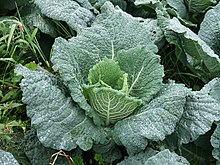
Allow 6-8 oz. [170-225g] per person.
Prepare and boil in a little salted water, as in #384, or cook in fat, as in #387.
To serve boiled cabbage or savoy, add a little melted margarine or butter and toss well. The addition of a little vinegar is an improvement. Cabbage may also be served au gratin, #386, or shredded raw in salads.
Cook in a little fat, as in #387, adding , medium-sized chopped onion for each pound [450g] of cabbage, and a pinch of ground mace or nutmeg. A little chopped bacon may also be added with the onion.
VEGETABLES, HERBS, AND SALADS 197
Quantities for 4 helpings:
1½ lb. [675g] cabbage, shredded (12 c.)
6 Tbs. vinegar
1 Tbs. sugar
1 oz. [30g] bacon fat or dripping (2 Tbs.)
Pinch of ground cloves
Measures level. Boil the cabbage in a little salted water, as in #384. Drain well.
Boil the other ingredients in a small pan for a few minutes. Pour over the cabbage and serve at once. This is very good with pork or sausages.
Quantities for 4 helpings:
1½ lb. [675g] cabbage, shredded (12 c.)
1 tsp. meat extract
1 oz. [30g] fat (2 Tbs.)
4 leeks, chopped, or small onions
3 Tbs. flour
½ Pt. [285ml] stock (1 c.)
4 rashers bacon, chopped
Salt and pepper to taste
Boil the cabbage, leeks, and bacon in about 12 Pt. water for 15-20 minutes, or until tender. Drain and keep hot.
Use ½ Pt. [285ml] of the liquid, fat, and flour, to make the sauce by the Roux Method, #69. Season well and add the extract. Pour over the cabbage.
Quantities for 4 helpings:
4 large cabbage leaves
For the stuffing use half the Risotto recipe, #551, or half the Minced Meat recipe, #366.
Serve with ½pt. [] (1 c.) Cheese Sauce, #75, or Tomato Sauce, #92.
Pour boiling water on the cabbage leaves to soften them. Place some stuffing on each and roll up tightly.
198 THE PENGUIN COOKERY BOOK
Pack closely in a pan and add a very little stock or water. Cook gently for 20 minutes to ½ hour. Add any liquid to the sauce and serve with the sauce poured over.
Quantities for 4 helpings:
1 oz. [30g] dripping (2 Tbs.)
2 Tbs. stock or water
1 lb. [450g] red cabbage, shredded (8 c.)
2 Tbs. vinegar
1 tsp. salt
1 large onion, sliced
Pinch of pepper
1 large apple, sliced
1 Tbs. brown sugar
Measures level. Melt the dripping in a saucepan and add all the other ingredients. Cover with a tight-fitting lid and boil gently for ½-¾ hour or until the cabbage is tender. Stir occasionally, and do not cook too quickly, or the pan will boil dry. There should be hardly any liquid left at the end of cooking. This is very good served with pork or sausages.
Allow 6-8 oz. [170-225g] per person.
Prepare by scrubbing well and then scraping. If the carrots are freshly dug and young, they will only need washing. Young ones may be cooked whole, otherwise slice or dice them.
Cook by boiling in, a little water, as in #384, or stew in fat, as in #387, or cook in a casserole, as in #388, or use one of the recipes given below.
Serve according to the method of cooking, sprinkling with chopped parsley. Cold cooked, diced carrots may be used in salads, or use raw grated carrot. A favourite method of serving boiled carrots is with Parsley Sauce, #89.
VEGETABLES, HERBS, AND SALADS 199
Quantities for 4 helpings:
1 oz. butter or margarine (2 Tbs.)
½ tsp. salt
1 tsp. sugar
1 lb. [450g] young carrots, sliced (4c.)
1 Tbs. chopped parsley
Measures level. Melt the butter or margarine in a saucepan, and add the other ingredients, except the parsley.
Cover and cook gently until tender. Serve with the chopped parsley sprinkled over.
Boil equal quantities of sliced carrots and whole sprouts together in a little water, as in #384.
Allow 1 large head for 4 portions.
Prepare by removing the outer leaves and stalk, which should be used for Vegetable Stock, #32. Divide the cauliflower into sprigs or leave whole and wash well.
When left whole cauliflower takes longer to cook and has a stronger flavour.
To cook, boil in a little water, as in #384.
To serve, make a sauce with the vegetable water, as in #70. Cauliflower may also be served au gratin, #386, cooked or raw in salads, or with Hollandaise Sauce, #81.
Quantities for 4 helpings:
1 large cauliflower
6 Tbs. flour
2 oz. [55g] fat (4 Tbs.)
1 pt. [570ml] stock ( 2 c.)
2 oz. [55g] chopped bacon (4 c.)
Salt and pepper
4 Tbs. chopped parsley
1 Tbs. chopped onion
200 THE PENGUIN COOKERY BOOK
Measures level. Boil the cauliflower in a little salted water, as in #384. Fry the bacon and onion in the fat in a small saucepan. Add the flour and finish the sauce according to the Roux Method, #69. The outside leaves and stalks of the cauliflower should be used to make the stock and add milk to make up to the pint. Season to taste, add the parsley and pour over the cauliflower.
Boil the cauliflower in a little water, as in #384. Drain well. For 1 large cauliflower melt 1 oz. [25g] dripping (2 Tbs.) in a pan and fry in it 1 large chopped onion, together with the drained cauliflower. Serve when brown.
Allow 1 large head for 2-3 people.
Prepare by removing any damaged outside stalks and the green leaves. Use these in Vegetable Stock, #32.
Pull off the stalks and trim the root. Wash very thoroughly in cold water, using a small brush if necessary.
To cook, cut in pieces and boil in a little water, as in #384, or stew in a little fat, as in #387, or cook in a casserole, as in #388.
To serve, make a Sauce, #70, from the cooking liquid, or serve au gratin, #386. The tender centre stalks are used raw in salads or eaten with cheese.
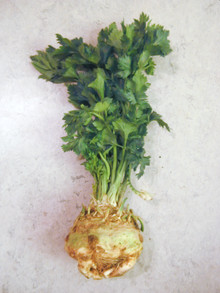
Allow 6-8 oz. [170-225g] per person.
Prepare by scrubbing and peeling. Cut in slices or dice.
To cook, boil in a little water, as in #384, or cook in fat, #387, or in a casserole, #388.
To serve, make a sauce from the cooking liquid, as in #70. They may also be used raw, grated in salads.
VEGETABLES, HERBS, AND SALADS 201
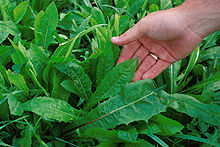
Allow 4 oz. [110g] per person.
Prepare by cutting off any damaged leaves and washing well.
To cook, put in hot water to cover, bring to the boil and boil for 5 minutes. Drain well. Then boil in a little water, as in #384, or cook in fat, #387, squeezing a little lemon juice over to help keep a good colour. Cooking takes about 30-35 minutes. To serve drain well.
Chicory is also used sliced in salads, but may sometimes be found too bitter to eat raw. It is advisable to try a little first.
Temperature 400 F. [204°C] Mark 6.
Quantities for 4 helpings:
1 lb. [450g] chicory
4 oz. [110g] bacon or ham (4 rashers)
1 Tbs. lemon juice
½ pt. [285ml] Cheese Sauce, #75 (1 c.)
4 Tbs. buttered crumbs, #772.
Measures level. Boil the chicory until tender in a little salted water with the lemon juice. Drain and put in a baking-dish in layers with the sauce and bacon or ham, finishing with a layer of sauce. Cover the top with the crumbs and bake in a moderate oven for 20 minutes.
Chives are used to replace onion where a milder flavour is desired. They are chopped finely and used in salads, omelets, scrambled eggs, mashed potatoes, cottage cheese, and sandwich fillings.
202 THE PENGUIN COOKERY BOOK
.jpg)
Chervil is a very delicate herb which wilts quickly and is seldom on sale in a greengrocer's. It is used chopped with cucumber salad and in soups and sauces.
Use in green salads in the same way as Lettuce.
These are usually served raw in salads, see #505, but when cheap and plentiful may be cooked and served in the same way as Vegetable Marrow, #488-91.
FRIED. Peel and cut in ¼-inch [6mm] slices. Coat the slices in egg and breadcrumbs and fry in hot fat. Serve with tomato sauce.
BAKED STUFFED. Boil 5 minutes in salted water. Cut in half and scoop out the centre.
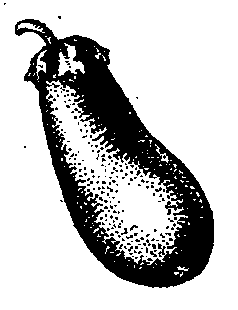
[g
p202]
Discard the seeds if they are big. Mix the pulp with an equal amount of chopped tomato cooked in fat with a little onion. Season well and put back in the shells. Cover the tops with browned bread crumbs and bake in a hot oven until browned on top.
GRILLED. Peel and cut in slices ¼ inch [6mm] thick. Mix 1 Tbs. oil with ¼ level tsp. salt and pinch pepper. Dip the slices in this and grill 3 minutes each side. Serve with fried eggs or Tomato Sauce, No.92.
STEWED. Peel, slice, and stew in Tomato Sauce, #92.
VEGETABLES, HERBS, AND SALADS 203
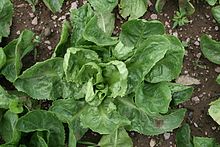
This is generally used raw in salads in the same way as lettuce. Wash thoroughly, removing any damaged leaves, and then drain well.
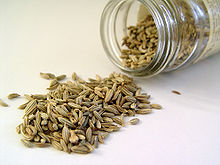
Use the chopped leaves in sauce to serve with fish or boiled mutton. It may also be used to flavour stews and soups.
As it is very strong, only minute amounts should be used. <!!!!>
Each bulb of garlic consists of a number of cloves, and half a small one of these is plenty to flavour a soup or stew for 4 people. It is specially good in dishes made with lamb or mutton, and a cut clove of garlic rubbed round the salad bowl gives a slight flavour which is very pleasant.
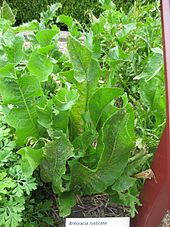
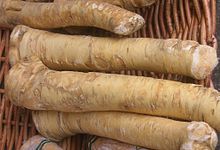
Grated horse-radish is used to make Sauce, #82, to serve with roast beef, or with fatty fish such as herrings.
A little is nice on grilled steak or in sandwich fillings.
For the best flavour it should be grated, just before use, and grate the sides, not across the cut end, which is very difficult.
Allow ½ lb. [225g] per person.
Prepare by washing well and stripping the green from the coarse stalks, unless the kale is very young, when the stalks will be tender enough to eat.
To cook shred large leaves, and cook in the same way as cabbage, see #407.
204 THE PENGUIN COOKERY BOOK
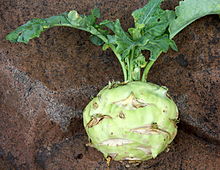
Allow 6-8 oz. [170-225g] per person.
Prepare by removing the green leaves and stalks and peeling fairly thickly, to remove the outer skin.
Cook and serve in the same way as turnips, see #487.
Allow ½-¾ lb. [224-335g] per person.
Prepare by removing the roots and coarse outer leaves.
Cut the tops off about 2 inches above the white part and use them for Vegetable Stock, #32. Cut the leeks in half lengthwise, and wash thoroughly, opening up the outer leaves to remove all dirt. Drain well.
To cook, boil in a little salted water, as in #384.
To serve, drain well and serve with Sauce, #70, made with some of the cooking liquid, or with Cheese Sauce, #75, or Tomato Sauce, #92, or Caper Sauce, #73. Cold, boiled leeks with French Dressing, #116, or Vinaigrette Sauce, #117, make an excellent salad or hors-d'oeuvre.
Allow 5 medium-sized lettuce for 3 people.
Prepare by removing any damaged leaves and then washing the rest in cold water. Drain well and hang up in a towel in a cold place to get crisp, or put in a covered dish in the refrigerator.
To serve see Salad recipes, Nos. #498-522.
Allow 1 ear per person.
Prepare by boiling in a little salted water until tender. This will take anything from 10 to 20 minutes, depending on the age of the corn. It may also be stripped from
VEGETABLES',' HERBS, AND SALADS 205
the cob before cooking, but only if the corn is fairly well developed. It is nicest when fairly young and freshly picked. If it takes more than 20 minutes to cook it is too old to be nice. It may also be baked in the oven with a little fat.
To serve, add a little butter or margarine, toss well, and season with salt and pepper. Or it may be served with a well-seasoned Medium Sauce, #69, made with milk, or used to make fritters, see #760.
Quantities for 4 helpings:
1 oz. [30g] butter or margarine
1 small sprig thyme (2 Tbs.)
¼ bay leaf
2 C. cooked corn
1 tsp. sugar
2 c. chopped tomatoes
Salt and pepper to taste
1 sprig parsley
Measures level. Melt the butter or margarine in a saucepan and add the tomatoes and chopped herbs. Cook for 10 minutes. Add the corn and cook for 20 minutes.
Season well and serve hot.
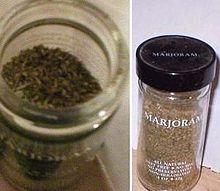
The fresh or dried herb is used for flavouring sauces, stews, soups, meat rissoles, and other savoury dishes.
Use to make Mint Sauce, No. 118, and to cook with new potatoes and green peas. It should be used with discretion, or the flavour will drown the natural flavour of the vegetables. It is excellent with salads, and for stuffing lamb or mutton, see #138, and to serve sprinkled over cooked carrots or peas. Mixed with jam or dried fruit and sugar it makes an unusual filling for sweet patties.
206 THE PENGUIN COOKERY BOOK
Allow 2-4 oz. [55-110g] per person.
Prepare by removing the stalks, and peeling off the outer skin, using a small sharp knife. Discard any which have worm-holes or are old and blackened. The stalks and peelings should be used to make Mushroom Stock, #34.
Cook by grilling with a small knob of fat in the centre, or frying; or use to make Mushroom Sauce, #84, or for flavouring soups and stews.

This is generally used in salads, or served plain with bread-and-butter. It should be thoroughly washed and any split seeds removed. Drain well.
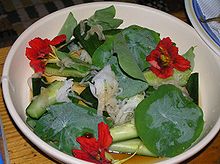
Young nasturtium leaves are very good in salads or for a sandwich filling. Wash the leaves well before using.
The seeds may be pickled and used in place of capers.
Allow 4-6 oz. [110-170g] per person.
Prepare by peeling off the brown skin. If this is done under water it helps to prevent the eyes from watering.
Cook by boiling in salted water to cover, until tender.
This will take anything from ¾ to 1½ hours, depending on the size. Drain well and use the water for stock. They may also be roasted in fat, see #389, or baked in their jackets by standing them on a baking-shelf in a moderate oven 400 F. [204°C] Mark 6, and cooking until they are soft when squeezed. This will take 40-60 minutes. They may also be cooked in a pressure cooker for 5-10 minutes, or longer if very big.
To serve boiled onions make Sauce, #70, using some of the cooking liquid, or serve au gratin, #386.
VEGETABLES, HERBS, AND SALADS 207
Cooking time ¾ hour.
Quantities for 3-4 helpings:
1 lb. [450g] small onions or shallots (16)
2 Tbs. sugar
2 oz. [55g] butter or margarine (4 Tbs.)
Measures level. Peel the onions and boil until nearly done. Drain well. Melt the fat in a saucepan and cook the onions in it until they are brown. Then sprinkle on the sugar and cover the pan. Cook gently for a few minutes longer until the onions are quite tender. Serve hot.
Quantities for 4 helpings:
1 oz. [30g] dripping (2 Tbs.)
4 medium-sized onions,
4 slices cheese sliced
Salt and pepper
French mustard
4 slices hot buttered toast
Fry the onions in the hot fat until tender. Spread on the toast, and sprinkle with salt and pepper. Spread the slices of cheese with mustard, and place on top of the onions. Grill, or bake in a hot oven until the cheese melts. Serve at once.
Ordinary parsley may be used for decorating and flavouring all savoury dishes.
Hamburg parsley leaves are used in the same way, but the roots are cooked like parsnips.
208 THE PENGUIN COOKERY BOOK
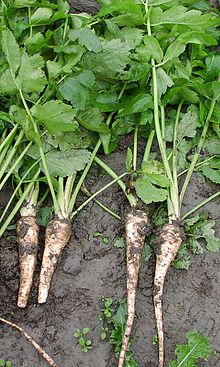
Allow 6-8 oz. [170-225g] per person.
Prepare by scrubbing and peeling.
Cook by boiling in a little water, as in #384, or in a pressure cooker, stewing in fat, as in #387, roasting in fat, #389, or cooking in a casserole, #388.
To serve boiled parsnips, mash well with a little butter or margarine and season with salt and pepper. Carrots and parsnips cooked and mashed together are a very good mixture. Parsnips, cooked by any method, go well with fish.
Boil the parsnips in a little water, as in #384. Mash well and season with salt and pepper to taste. Shape in balls and roll in breadcrumbs. Bake in a hot oven for 20 minutes, either with the fish or in a dish by themselves.
Allow ½ lb. [225g] per person, but the amount varies according to the fullness of the pods.
Prepare by shelling. If the pods are fresh and young, use them to make Vegetable Stock, #32.
Cook in a little water, as in #384. It is traditional to cook a little mint with peas, but this is a pity when they are young, as the mint disguises the natural sweet flavour. In France they are cooked with lettuce leaves and a few small onions, which is an excellent method.
To serve, add a little butter or margarine and toss well.
Quantities for 4 helpings:
2 lb. [900g] peas (2½ c. shelled)
4 or 5 small onions
1 oz. [30g] butter or dripping (2 Tbs.)
Pinch of pepper
½ tsp. salt
VEGETABLES, HERBS, AND SALADS 209
4 or 5 outside leaves of lettuce
2 rashers bacon, chopped
2 or 3 Tbs. water
Put all the ingredients in a saucepan and cook gently until the peas are tender. Add more water if necessary to prevent burning.
Quantities for 4 helpings:
½ lb. [225g] young carrots, diced (1½ c.)
1 Tbs. sugar
1 oz. [30g] butter or margarine (2 Tbs.)
¼ Pt. [140ml] water (½ c.)
1 tsp. salt
1½ lb. [675g] peas (1¾ c.)
Measures level. Place the carrots in a saucepan with all the other ingredients except the peas. Cook gently for 5 minutes, and then add the peas and continue cooking until the peas and carrots are tender. There should be hardly any water left in the pan.
These may be the very small hot ones known as Chillies, from which cayenne pepper is made and which are
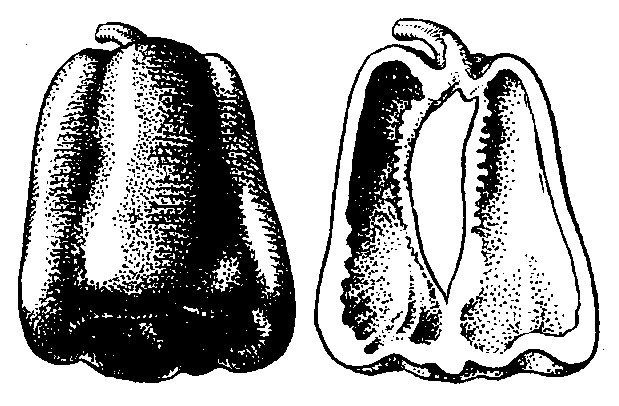
[g
p209]
210 THE PENGUIN COOKERY BOOK
used dried in pickles; or the large sweet ones, which may be green or red in colour, and are used as a vegetable.
These are prepared by cutting in half and scraping out the seeds and membranes. They are generally served stuffed, or sliced and used in stews and vegetable soups, or raw in salads.
Quantities for 4 helpings:
4 peppers
1 egg
1 small onion, chopped
Salt and pepper
1 oz. [30g] fat (2 Tbs.)
1 Tbs. chopped parsley
1½ oz. [40g] rice (1½Tbs.), boiled, or ⅓c. breadcrumbs
½Pt. [285ml] Tomato Sauce, #92 (1c.)
4 oz. [110g] minced meat or ham (½c.)
Measures level. Prepare the peppers, as in #452. Fry the onion in the fat and add the meat, rice or breadcrumbs, egg, and seasonings. Fill the peppers and place them in a baking-dish or saucepan. Pour round the sauce and cook gently until they are tender, about ¾ hour. Serve hot with mashed potatoes and lettuce salad.
Allow ½ lb. [225g] per person.
Prepare by scrubbing well. New potatoes should be scraped, if the skins do not come off with scrubbing. Old potatoes are peeled thinly. Both new and old potatoes are very good cooked in their skins, and have much more flavour than when peeled.
Cook according to any of the methods given below.
Peel, or leave the skins on, and put in enough boiling salted water to cover. Cook with the lid on and keep
VEGETABLES, HERBS, AND SALADS 211
boiling gently, as rapid boiling makes the potatoes break and become mushy. When tender, drain carefully and shake over a low heat for a minute or two to make them floury and dry. New potatoes may be cooked with a sprig of mint for extra flavour.
Boil small or medium-sized potatoes in their jackets, as in #455. Peel while hot. Melt enough fat to cover the bottom of the pan and cook the potatoes in it until brown all over. Turn frequently.
Boil according to #455. If unpeeled, remove the skins by holding the potatoes on a fork and peeling with a sharp knife. Mash well or rub through a sieve. Return to the pan and beat with 1 Tbs. hot milk and 1 oz. [30g] margarine for each pound [450g]. Season with salt and pepper and add a little chopped parsley or chives for extra flavour.
Beat well to make them white and smooth, keeping the pan over a gentle heat to make sure the potatoes are still hot.
Choose medium or large potatoes without blemishes.
Scrub them well, dry, and rub the skins with greased paper. Place on a baking-shelf in a moderate-hot oven 400-450 F. [204-232°C] Mark 6-8, and cook for 45 minutes or until tender. They are done if they feel soft when squeezed in a cloth. Prick well to allow steam to escape and make them floury. The most attractive way of serving them is to prick the top in the shape of a cross. Then squeeze the sides of the potatoes gently; and the cross will open into four points. Put in a knob of butter or margarine, a little salt and pepper or paprika pepper, and a sprig of parsley.
212 THE PENGUIN COOKERY BOOK
For each potato allow:
1-2 Tbs. Milk
1 Tbs. chopped parsley or minced ham or corned beef or grated cheese, or ½Tbs. chopped fried onion
½tsp. butter or margarine
Pinch of pepper
¼tsp. salt
Measures level. Bake the potatoes as in #458. Cut in half lengthwise and scoop out the inside carefully. Mash with the milk, fat, seasonings, and chosen flavouring.
Put back into the shells. Brown in a hot oven 450 F. [232°C] Mark 8, for a few minutes.
Cook in a little hot fat in the oven according to #389, rolling the potatoes in seasoned flour before putting them in the fat.
1. Choose large potatoes. Scrub and peel them and cut into ⅜-inch slices lengthwise and then again lengthwise; or use a potato chipper.
2. Put into cold water to cover until ready for frying.
3. Drain well and dry thoroughly on a clean towel.
4. Fry in hot, deep fat, see #157, or in a shallow fat, No. #156. Drain well on absorbent paper and sprinkle with salt. Serve as soon as possible, as they become flabby with keeping.
Cut the potatoes in thin shavings on a vegetable slicer or with a sharp knife. Fry in deep fat, as in #157.
VEGETABLES, HERBS, AND SALADS 213
Cut the potatoes in very thin strips about ¼ inch [6mm] wide and about 3 inches [75mm] long. Fry in the same way as Chip Potatoes, #461.
Prepare like Mashed Potatoes, #457, and for each pound of potatoes add 1 egg-yolk, 1 Tbs. milk, 1 oz. [30g] butter or margarine, salt and pepper, and a pinch of nutmeg. Put through a forcing bag in rosettes on to greased trays and bake in a hot oven until brown. The mixture may also be used for ornamenting savoury dishes, and is referred to in several recipes.
Shape raw potatoes in balls with a vegetable scoop or cut in cubes and fry in shallow fat until well browned and cooked. Drain and sprinkle with chopped parsley, salt and pepper.
Boil the potatoes according to #455, and let them cool a little. Then fry brown in shallow fat. Drain and sprinkle with mixed chopped parsley and mint.
Slice cold boiled potatoes and fry them brown in shallow fat. Sprinkle liberally with grated cheese, and allow the cheese to begin to melt before serving.
Quantities for 4 helpings:
2 lb. [900g] small potatoes (16 small)
1 pt. [570ml] water or stock (2 c.)
Salt and pepper
3 large onions
1 sprig thyme
214 THE PENGUIN COOKERY BOOK
1 oz. [30g] dripping (2 Tbs.)
1 bay leaf
2 Tbs. flour
2 sprigs parsley
Measures level. Peel the potatoes and onions and cut them in quarters. Heat the fat in a saucepan and stir in the flour. Stir and cook until it begins to turn yellow. Add the stock and stir until it boils. Add the rest of the ingredients, cover and boil gently for ¾ hour or until the potatoes are tender. Serve hot. This may be served as a separate dish for lunch or high tea.
Treat in the same way as marrow, see #488, except that to have the best flavour, pumpkin should be really ripe.
Wash well and serve very cold. They are generally eaten as hors-d'oeuvres at the beginning of a meal or with cheese at the end; but may be used in salads and for decorations. To cut radish roses, use a sharp-pointed knife and cut slashes from the root end to within ¼ inch [6mm] of the stalk and ⅛inch [3mm] deep, cutting to make petal shapes. Ease the red skin away from the rest and put in iced water until required.
BLACK RADISH is grated or sliced very thinly and used in salads or eaten with cheese. Large ones may be cooked and served in the same way as turnips.
.jpg)
This is a strongly flavoured herb, and should be used in small amounts. It is used for a stuffing for pork or duck, in lentil soup, and with dried beans.
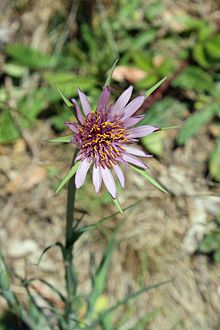
Allow 1 lb. [450g] for 3 people.
Wash and scrape the roots and treat in the same way as Jerusalem Artichokes, see #393.
VEGETABLES, HERBS, AND SALADS 215
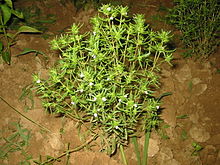
This herb is used in stuffings for veal or poultry, in sausages and meat rissoles, and with lentil soup or broad beans.
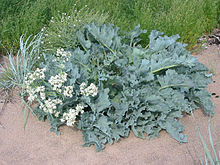
Allow 1 lb. [450g] for 3 people.
Prepare by cutting off any discoloured leaves and peeling the stump.
To cook, tie in bundles, put in boiling salted water, and cook for 20-30 minutes.
To serve, use the liquid to make Sauce, #70, or serve with Hollandaise Sauce, #81.
Cook and serve in the same way as Cabbage, #407.
The leaves and chopped stalks may be cooked together, or separately to make two different dishes, but the former method gives the best flavour.
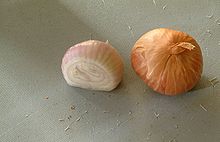
Treat in the same way as Onions, see #443.
Allow ½ lb. [225g] per person.
Prepare by removing any decayed leaves and weeds and washing in several changes of water until the last water is clean. Lift the spinach out each time to allow the sand to collect in the water. Let the water away, run in fresh, and then add the spinach again.
Cook as in #384, but no water need be added, as there is sufficient left on the leaves after washing.
To serve, drain well, pressing out all moisture. Return to the pan and heat gently to dry it further. Add a little butter or margarine, pepper, and a pinch of ground mace or nutmeg.
216 THE PENGUIN COOKERY BOOK
Quantities for 4 helpings:
2 lb. [900g] spinach
Pinch of grated nutmeg or mace
2 oz. [30g] butter or margarine (4 Tbs.)
Squeeze of lemon-juice
Salt and pepper to taste
Cook the spinach as directed for #477. Drain well.
Rub through a sieve. Melt the fat and add the spinach and other ingredients. Heat gently until thick.
Boil the spinach, as in No.477. Make a bed of it on each plate and put a poached egg on top. If liked, pour over a little Cheese Sauce, #75, and brown under the grill.
Cut off the roots and trim off any damaged leaves. Wash well and use in salads, with cheese, to flavour mashed potatoes, or in place of onions in stews and savoury dishes.
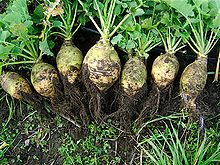
Allow 6-8 oz. [170-225g] per person.
Prepare by scrubbing and peeling thickly to remove the outer skin. Cut in chunks, slices, or dice.
Cook by boiling in a little water, as in #384, or in a casserole, #388, or stew in fat, #387.
To serve, mash well with a little pepper and butter or margarine.
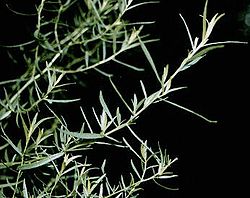
Use the finely chopped leaves in salads (especially tomato), sauces, stews, and pickles.
VEGETABLES, HERBS, AND SALADS 217
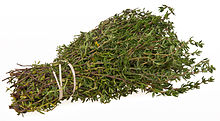
Use in small amounts in stuffings and savoury dishes. It forms a part of the traditional bouquet garni used extensively in cooking, see #13.
Allow 4-6 oz. [110-170g] per person.
Prepare by removing the green flowers and washing well. If they are to be skinned, plunge them in boiling water for a minute or two and then into cold water, when the skins should peel off quite easily.
Cook by stewing without any liquid. Season with salt, pepper, and sugar; or prick well to prevent bursting and bake in a moderate oven for 20 minutes; or cut in half and grill for 10-15 minutes; or dip the cut sides in seasoned flour and fry in shallow fat until tender.
Serve as cooked. They may also be used to make sauce, #92, and soups, Nos. #56 and 48.
Temperature 400 F. [204°C] Mark 6.
Quantities for 6 helpings:
6 large tomatoes (about 1 lb.[450g])
1 tsp. chopped parsley
¼ tsp. salt
½ oz. [15g] fat (1 Tbs.)
Pinch of pepper
½ onion, chopped
Pinch of sugar
1 oz. [30g] chopped bacon
Pinch of grated nutmeg
1 Tbs. grated cheese
½ c. fresh breadcrumbs
Measures level. Cut a slice off the stem end of the tomatoes. Remove the pulp carefully, using a small teaspoon, and rub it through a sieve. Fry the bacon and onion in the fat and mix with the pulp and other ingredients.
Stuff the tomatoes with this and sprinkle the tops with crumbs. Bake in a moderate oven for 20 minutes. Serve hot.
218 THE PENGUIN COOKERY BOOK
Temperature 400 F. [204°C] Mark 6.
Quantities for 4 helpings:
1½ lb. [675g] tomatoes (8-9 large)
1 Tbs. sugar
1 tsp. salt
1 medium onion, chopped
¼ tsp. pepper
2 oz. [55g] grated cheese, optional (½ c.)
½ oz. [15g] dripping (1 Tbs.)
3 oz. [85g] breadcrumbs (1 c.)
Measures level. Skin the tomatoes, see #484, or leave the skins on, according to taste. Slice them. Fry the onion in the dripping. Put the tomatoes, onion, seasonings, and crumbs in layers in a pie-dish, finishing with crumbs. Dot with fat and bake in a moderate oven for 30-35 minutes. For variety mix 2 oz. grated cheese with the crumbs.
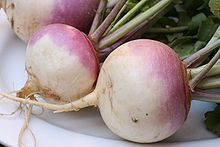
Allow 6-8 oz. [170-225g] per person.
Prepare by scrubbing well and peeling thickly to remove the outer skin. Small turnips should be left whole, others cut in chunks or slices, or diced.
Cook according to Nos. 384-9.
Serve as cooked, or mashed with a little pepper and fat.
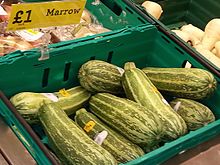
Allow 1 medium-sized marrow 2-3 lb. [900-1350g] for 4 people.
Marrows about 9 inches [225mm] long are delicious cooked whole with the skin on, and the whole marrow may be eaten. Small marrows called 'courgettes' are grown in France specially for this purpose. The bigger a marrow is allowed to grow the less flavour it has.
Prepare large or medium marrows by cutting in pieces and removing the seeds. The skin may be left on.
VEGETABLES, HERBS, AND SALADS 219
Cook by boiling in a little water, as in #384, cooking in a casserole, #388, roasting in fat, No.389, stewing in fat, #387.
To serve, season with pepper and put a small knob of fat on top, or mash well. They may also be served with a vegetable sauce, #70, or au gratin, #389.
Quantities for 4 helpings:
2 lb. [900g] marrow
Pinch of mixed herbs
8 oz. [225g] tomatoes, sliced
½ tsp. sugar
1 medium onion, sliced
¼ Pt. [140ml] stock (½ c.)
1 oz. [30g] dripping (2 Tbs.)
2 Tbs. chopped parsley
Salt and pepper
Measures level. Prepare the marrow and cut it in small pieces. Fry the tomatoes and onion in the dripping for 5 minutes, using a saucepan. Add the other ingredients, except the parsley. Cover and cook gently for 30 minutes or until the marrow is tender. Turn into a hot dish and sprinkle with parsley.
For 1 medium marrow allow 1 lb. [450g] sausage meat or Minced Meat, No.366. Peel the marrow and cut a slice off the top. Scoop out the seeds and fill with the stuffing. Tie on the end again. Put in a baking-dish with a little fat and cook in a moderate oven 375 F. [191°C] Mark 5, until tender about ¾ hour. Baste often with the fat or cover the dish with a lid. Serve with Brown Sauce #72, or Tomato Sauce, #92.
Mix cooked marrow, cut in small pieces with half its bulk of onions, fried in a little fat.
220 THE PENGUIN COOKERY BOOK
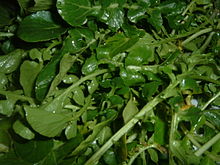
This is generally used for salads, either by itself or mixed with other vegetables, or as a garnish for grilled or fried meats. It may also be chopped and mixed with mashed potato, or used for Soup, #44, Stuffing, #138, or Butter, #132.
Allow 4 oz. [110g] (dry) (4 c.) per person. 1 lb. dried peas or beans gives 2 lb. [900g] cooked.
1. The treatment to be given dried vegetables depends on their quality (age and condition before drying), and the hardness of the water to be used for cooking.
Good-quality dried vegetables do not need soaking, nor do lentils and split peas, but poor-quality peas and beans should be soaked in warm water for about 1½ hours before cooking. If the water is hard it prevents the vegetables from softening quickly, and it is advisable to add a little bicarbonate of soda to soften it. 1 level tsp. of soda to each pound of dried vegetables is plenty. If too much is used, the flavour and colour are spoiled, and the beans will fall to pieces on the outside before the inside is cooked. Dried vegetables need 2-4 times their bulk of water for cooking, depending on the length of time taken.
2.Bring the vegetables and water to the boil and
/p 220
chapter 13 continues to p230
cover the pan. Cook very slowly until tender. Peas and beans take from 2 to 3 hours and lentils and split peas ½-¾ hour.
3. For extra flavour cook a sprig of mint or a pinch of dried mint with peas. With beans, lentils, or split peas, cook an onion stock with a few cloves, a carrot, and some bacon rinds.
4. Use the cooking liquid for soups, sauces, and gravy. NB. Much time is saved by cooking dried vegetables in a pressure cooker. Add four times their bulk of water, and be careful not to fill the pan more than half full, to allow for swelling. Cook for 25-30 minutes.
Cook the beans as directed in #494. Drain well. For each pound of dried beans fry 2 medium sliced onions in dripping, and when brown add the beans and mix well. Sprinkle with chopped parsley and serve hot.
Quantities for 4 helpings:
1 lb. [450g] beans (2 c.) 2 Tbs. tomato puree
4 Tbs. oil or dripping Salt and pepper
2 fresh sage leaves
Measures level. Boil the beans according to #494. Drain well. Heat the oil or dripping and the chopped sage leaves. When hot add the beans and cook until the fat is absorbed. Add the tomato and season well.
To each pound of dried peas or split peas allow 1 oz. margarine and 1 egg. Cook the vegetables as in #494, and rub through a sieve. Beat with the margarine and egg and season well. Put in a greased basin and steam for 1 hour. Turn out and serve with meat or with a Tomato Sauce, #92, or Brown Sauce, #72.
It is a pity that the traditional English diet confines salads to the summer months, because they could be used to give much-needed variety all the year, and are one means of providing the extra vegetables we need for good health.
They may be served with hot or cold meat, fish or other savoury dishes, or as an extra course by themselves either at the beginning of a meal or later. Even in the winter salads make an appetizing light meal, especially if preceded by a plate of hot soup. The inexpensive winter vegetables, such as cabbage, brussels sprouts, and carrots, all make excellent salads.
The ideal is to make salads of raw vegetables, but if you do not like raw cabbage, carrots, etc., the next best is to use them cooked. It is a good plan to boil extra vegetables at dinner-time and then there will be some ready for salads at a later meal.
COOKED VEGETABLES. Potatoes, cabbage, sprouts, beetroot, turnip, parsnip, kohl rabi, swede, onions, leeks, peas, beans, cauliflower, broccoli, artichokes.
RAW VEGETABLES. Lettuce, watercress, cabbage heart, sprouts, spinach, endive, chicory, radishes,cucumber, onions, celery, cauliflower.
FRUIT. Any fruit, fresh or dried, is suitable.
MEAT AND FISH. Use any kind, cooked or canned.
EGGS. Hard-boiled or scrambled are suitable.
CHEESE. Use any kind grated or cut in slices or cubes.
FLAVOURINGS. Use green herbs, chives, parsley, mint, spring onions, nasturtium leaves, young celery leaves, mustard and cress, garlic, gherkins, pickles.
DRESSINGS. See Nos. #112-16.
1. All raw green salad vegetables should be as fresh and crisp as possible. Wash well under running water, and hang them up in a clean, damp cloth in a draughty place to drain. If you have a refrigerator, put them in a covered dish in the least cold part. They should he dried first, and the best way of doing this is to use a wire salad basket and shake or twirl the greens in it gently until all moisture is thrown off.
2. Cooked vegetables should be quite cold and well drained from all moisture. Cut cooked vegetables in slices or dice.
3. Raw vegetables, with the exception of lettuce and watercress, should be finely shredded with a sharp knife, or grated.
4. Fish and meat are improved in flavour if mixed with the salad dressing and allowed to stand some time before using. Potatoes are better if mixed with the dressing while they are still warm. Lettuce or similar raw green salads are better not dressed until just before serving, or they will become limp and slimy.
5. Serve salads in a large bowl, or arranged on a big flat dish, or serve individual portions in nests of curly lettuce leaves.
Quantities for 4 helpings:
3 c. cooked French or runner beans
½ tsp. salt
Salad dressing
½c. diced raw apple
½c. sliced raw or cooked cabbage
Measures level. Mix the vegetables with the salt and moisten with salad dressing.
Make individual nests of lettuce leaves or line a salad bowl with them. In the centre arrange thin slices of beet-root. Sprinkle with finely chopped mint and serve with French Dressing, #116.
Quantities for 4-5 helpings:
1½lb. [675g] cooked sprouts
1 small cooked beetroot
French Dressing, #116
Toss the cold sprouts in the dressing in a salad bowl. Decorate with the beetroot, cut in slices or diced.
Quantities for 4 helpings:
1 medium-sized cauliflower
6-8 strips of anchovy fillets
Mayonnaise, #112 or 113
Boil the cauliflower sprigs in a little water, as in #384, cooking some of the small green leaves with it. Arrange these round the bowl with the flowers in the centre. Dress with mayonnaise and decorate with the strips of anchovy.
Quantities for 4-6 helpings:
1½ lb. [675g] cucumbers (1 large or 2 medium size)
1 Tbs. salt
4 Tbs. vinegar
1 Tbs. water
¼ tsp. pepper
2 Tbs. sugar
2 Tbs. chopped parsley
Measures level. The fat field, or ridge, cucumbers make the best salads. Peel the cucumbers and slice them very thinly, the thinner the better. Arrange them in layers in a deep dish and sprinkle over the salt. Leave for 2 hours for the moisture to come out. Pour away the liquid. Rinse and drain the cucumber. Mix the vinegar, water, pepper, and sugar together and pour over the cucumbers. Sprinkle with chopped parsley.
Quantities for 2-4 helpings:
1 salt or 1 fresh herring
1 c. diced cooked potatoes
½ c. chopped gherkins
½ c. chopped apples
1½ c. chopped cooked beetroot
1 Tbs. chopped onion
4 Tbs. vinegar
2 Tbs. water
1 Tbs. sugar
Pepper to taste
Hard boiled egg
Chopped parsley
Measures level. If salt herring is used, clean, remove the head, and soak in cold water overnight. Drain, skin, fillet, and dice. Skin, fillet, and flake cooked herring. Mix all the ingredients together and pack into a basin or mould. Unmould on the serving dish and decorate with the egg and parsley.
The lettuce should be very dry, fresh, and crisp, see #498. For best flavour it should not be cut or broken, but the leaves left whole. French dressing is the best to use, but should not be added until just before serving, and use just enough to moisten. Turn the leaves over and over in the dressing, using a spoon and fork, until the lettuce is well coated. For extra flavour the salad bowl may be rubbed with a cut clove of garlic or chopped mint, or other herbs may be sprinkled on the leaves.
Quantities for 4 helpings:
3 or 4 oranges
1 lettuce
1 c. chopped apple.
1 c. chopped celery
1 Tbs. chopped nuts
Salad dressing
Measures level. Peel the oranges and remove the, pith. Slice them or divide them into sections. Arrange in individual portions on the lettuce leaves. Cover with the apples and celery and sprinkle with chopped nuts. Serve with, Mayonnaise, #112, or French Dressing, #116.
Quantities for 4 helpings:
1 ½ lb. [675g] potatoes
1 Tbs. finely chopped onion
¼ Pt. [140ml] Mayonnaise, #112 or Vinaigrette Sauce, #117
1 Tbs. chopped mint, parsley, or other green herbs
Measures level Boil the potatoes in their jackets, see #455. Peel and slice or dice while still warm. The waxy type of potato is best for salads, as the floury ones do not cut in clean slices. Add the chopped onion and mix we'll with the salad dressing. Sprinkle with the chopped herbs. Leave until cold. Instead of using onion, the bowl may be rubbed with a cut clove of garlic before putting in the potatoes.
NB. If the potatoes are floury it is better to dress the salad when cold.
Quantities for 3 helpings:
1 c. cooked diced potatoes
2-3 Tbs. French Dressing, #116
1 c. cooked diced beetroot
Chopped parsley
1 c. cooked haricot beans or dried peas
Measures level. Mix all the ingredients together and sprinkle with chopped parsley.
Quantities for 2 helpings:
4 oz. [110g] watercress
2 Tbs. French Dressing, #116
½ cucumber
6 spring onions
Wash and dry the watercress and cut the cucumber in thin slices. Chop the onions. Mix all with the dressing just before serving.
Use Recipe #193, allowing one egg per person. Place in a nest of lettuce leaves and decorate with slices of tomato and cucumber and some thick salad dressing.
Quantities for 1:
3-4 lettuce leaves
1 Tbs. chopped walnuts
1 red apple,. diced
1-2 Tbs. salad dressing
1 stick celery, chopped
Arrange the lettuce in a nest. Mix the other ingredients together and pile in the leaves. Decorate with a little red apple.
Quantities for 3-4 helpings:
8 oz. [225g] fresh or canned salmon
1 small beetroot or 3 or 4 tomatoes
1 lettuce
3-4 Tbs. mayonnaise
Chopped parsley
1 hard-boiled egg
Make a nest of the lettuce leaves. Place the salmon in the centre and mask with the mayonnaise. Decorate with the other vegetables.
Quantities for 4 helpings:
1 c. diced cooked chicken or rabbit
1 c. peeled and diced cucumber
1 c. chopped walnuts
1 c. cooked green peas
1 lettuce
Salad dressing, #112 or 113
Arrange nests of lettuce leaves on 4 plates. Mix the other ingredients with enough salad dressing to moisten. Pile in the centre of the lettuce and serve at once.
Quantities for 4 helpings:
2 c. raw grated carrot
2 c. raw grated apple
½ c. raisins or other dried fruit
1 lettuce
Salad dressing, #112 or 113
Arrange nests of lettuce leaves on 4 plates. Mix the carrot, apple, and fruit together and pile in the centre of the lettuce. Mask with salad dressing and serve at once.
Quantities for 4 helpings:
1 lettuce
3 c. sliced celery
1 ½ c. diced cheese
4 small tomatoes
Salad dressing, #112-14
Line the salad bowl with lettuce leaves. Mix the celery and apple with enough dressing to moisten and put in the centre. Decorate with sliced tomatoes. Serve at once.
Serve cold boiled asparagus with Mayonnaise, #112, or Vinaigrette Sauce, #117. If liked, arrange each portion in a nest of lettuce leaves.
Spread thin slices of cold, cooked ham with cottage cheese. Roll up loosely. Arrange in a nest of lettuce leaves and serve with salad dressing, #112-14.
Quantities for 4 helpings:
1 lb. [450g] potatoes
2 c. shelled prawns
4 Tbs. oil
2 Tbs. vinegar
1 tsp. salt
½ tsp. pepper
2 hard-boiled eggs
Boil the potatoes in their jackets. Peel and slice. Mix with the prawns. Mix the salt, pepper, oil, and vinegar together and combine with the potato and prawns while still warm. Leave to cool and decorate with the sliced eggs.
Quantities for 4 helpings:
4 medium-sized potatoes
1 small onion, sliced
2 Tbs. chopped parsley
4 rashers bacon, chopped
¼ c. vinegar
½ tsp mustard
2 Tbs. sugar
½ c. water
1 tsp. salt
¼ tsp. pepper
Measures level. Peel and slice the potatoes. Put in a pan with all the other ingredients. Cover and cook very gently until the potatoes are tender, about ½-¾ hour. Serve hot.
Alternative method. Boil the potatoes in their skins. Peel and slice. Heat the other ingredients together. Add the potatoes and allow to become well heated.
230
Quantities for 4 helpings:
1 lettuce, large
4 hard-boiled eggs
½ pt. [285ml] Mayonnaise, #112 (1c.)
Chopped chives or parsley
1½ Pt. [570ml] cooked shrimps. (1½ c. shelled)
Measures level. Make a nest of crisp lettuce leaves on each plate. Cut the eggs in half and place in the centre, cut side up. Cover the eggs with mayonnaise and sprinkle with the chives or parsley. Surround the eggs with the shrimps and serve at once.
/p 230